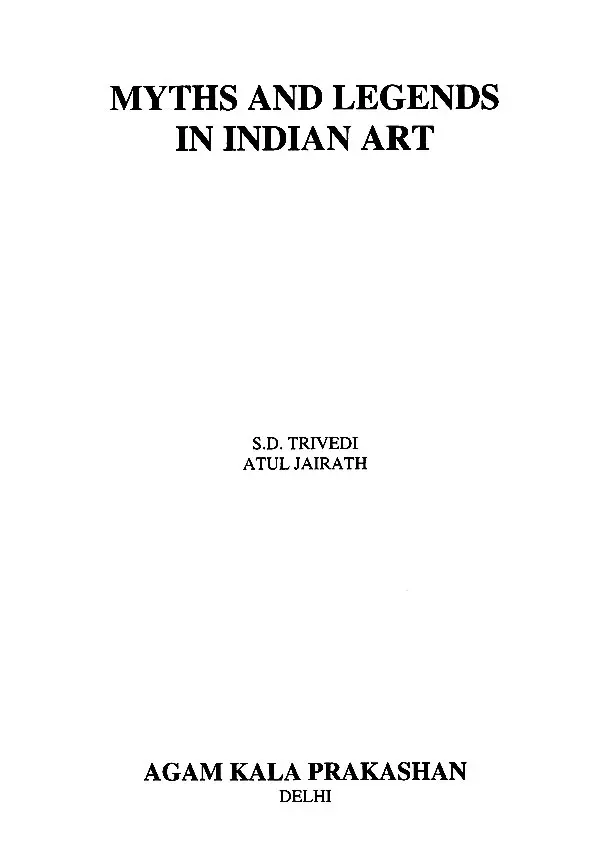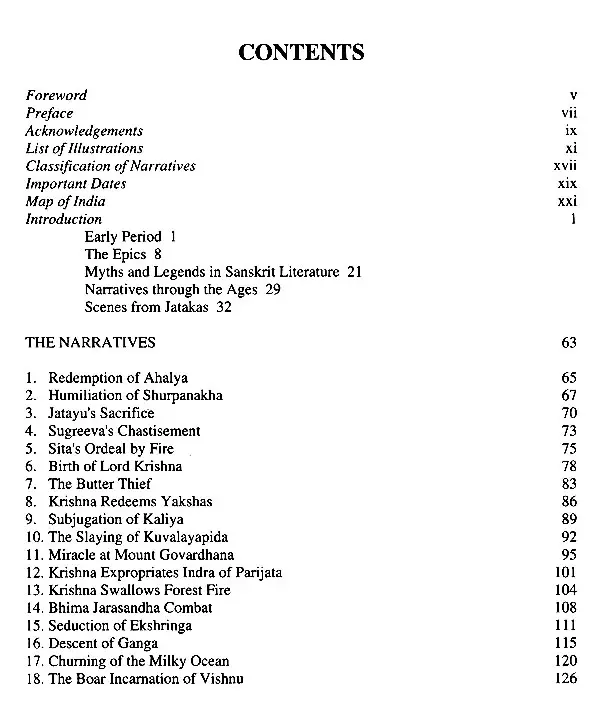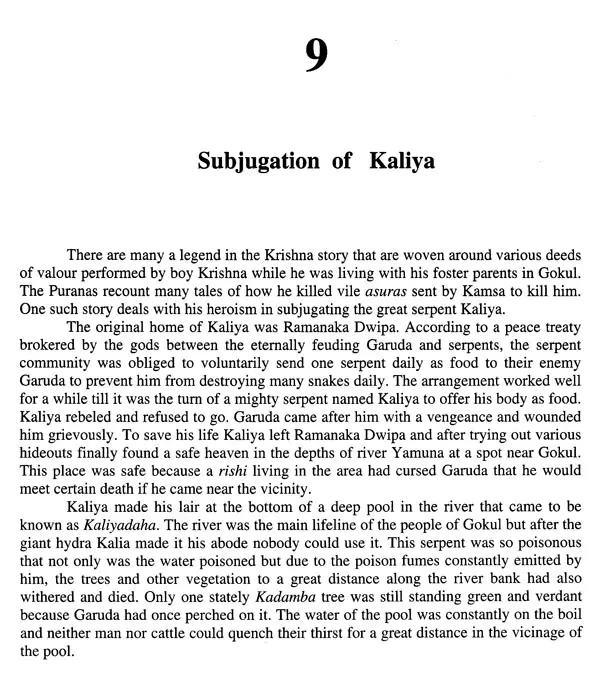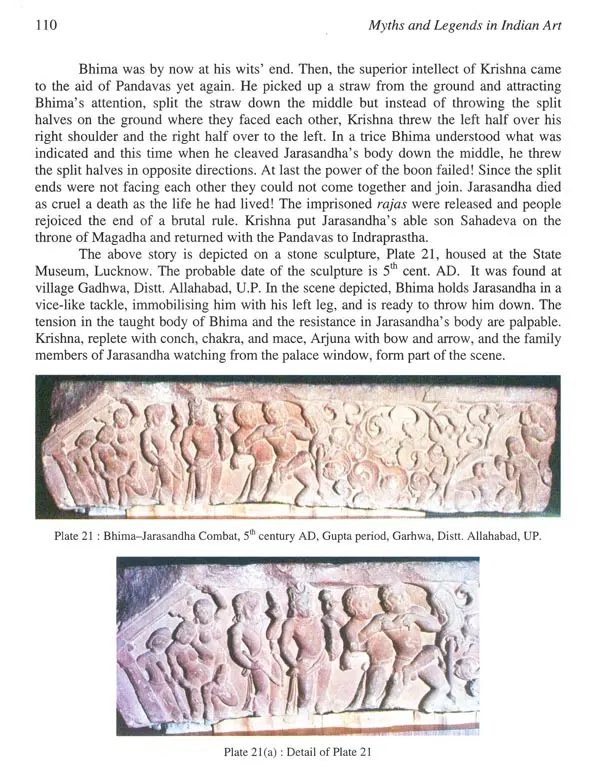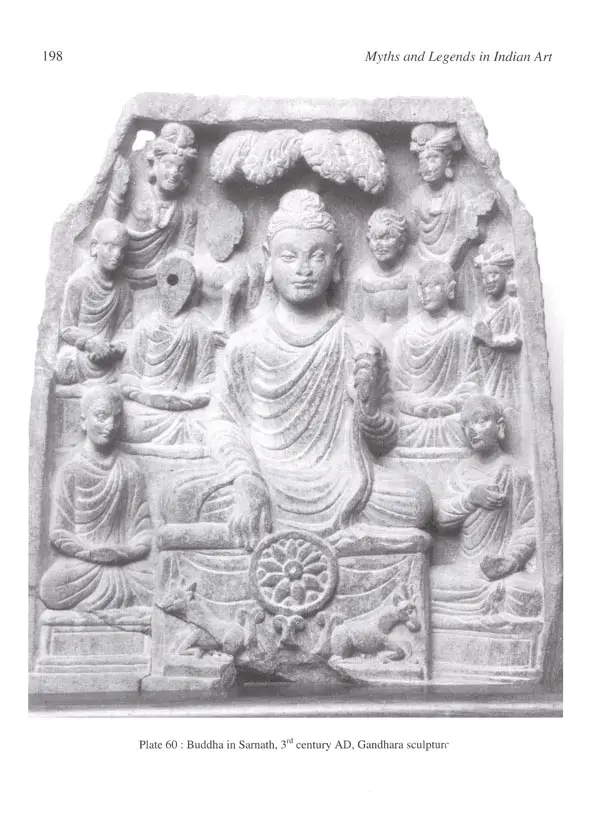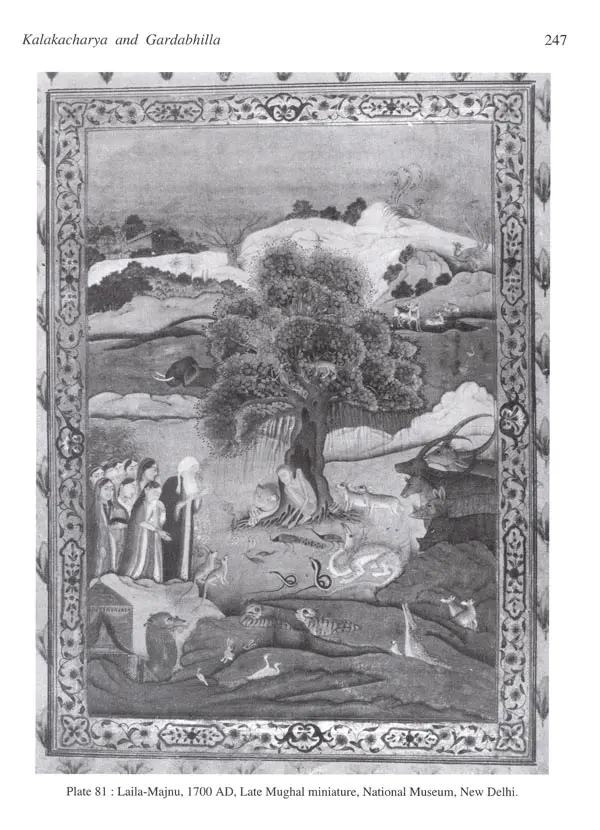
Myths and Legends in Indian Art
Book Specification
| Item Code: | UAN330 |
| Author: | S.D. Trivedi & Atul Jairath |
| Publisher: | Agam Kala Prakashan, Delhi |
| Language: | English |
| Edition: | 2009 |
| ISBN: | 9788173200892 |
| Pages: | 295 (Throughout Color and B/w Illustrations) |
| Cover: | HARDCOVER |
| Other Details | 11.00 X 9.00 inch |
| Weight | 1.55 kg |
Book Description
The book starts with the Introduction discosing the concept and role of myths and Jede in Indian Art It talks about the centrality of myths and legends in ancient Indian literature, Sklore and popular imagination of the ordinary people. It traces the essential role that myths played in the development of Hindu commology and consogorry, the flights of fancy of the early Aryan mind and the efforts of Vedic and post Vedic poets and thinkers to rationalize unexplained phenomenon and man's relationship with it through the medium of myriad divinities Also docussed are the various forms of early, later and post-Vedic literary works and their role in providing a platform for the growth of a stupendous storehouse of myths and legends that are the bedrock of ancient and modern religious practice.
It also discusses the chronological development of myths into various plastic arts The Indian artist made a conscious effort to highlight the ethos of mythology in his creations He successfully moulded the tales taken from literature, tradition and folklore into varied forms like terracotta, stone sculpture, painting etc The book deals specifically with the ploy of continuous narration in a single frame employed by the artist to a spectacularly telling effect. The extensive chronology of art activity in India as witnessed in the emergence of new themes, development of many trends and changes in the attitude and response of people has been discussed thoroughly.
The second part of the book contains about 55 stories from the rich literary and folk traditions of India, cach story adored by a representative photograph of artwork in clay, stone, wood or paint, illustrating the tale. The photographic reproductions are not there simply as an adornment for the story but their theme has been discussed at length with regard to the essence of the tale, the background, similar representations of the theme at other places and many more allied issues. For the first time the art forms have been evaluated in a comprehensive way in the perspective of mythology and prevalent tradition. The masterpieces of art reproduced have been carefully selected keeping in mind chronological range, variety of mediums, different sources of repositories, and, above all, their way of presentation.
Special attention has been paid the rich artistic heritage of India which is a happy confluence of multifarious religions and spiritual and cultural nuances Accordingly, stories and artwork representative of different religions and thought traditions have been included in the work It is our hope that the reader would appreciate the exhaustive treatment given by us and the monograph will be well received by all, including connoisseurs and lovers of India art
Dr. S.D. Trivedi served as Director of reputed museums at Jhansi, Allahabad and Lucknow. Widely traveled in United States of America and European countries regarding his academic pursuits, he has been associated with several organizations and universities in different capacities.
Dr. Trivedi has also authored several books and has made an enormous contribution in the field of Indian art history and culture.
Dr. Atul Jairath did her M.A. in Ancient Indian History and Archaeology with a first class. Thereafter she pursued research on the Buddhist Pali Canon and obtained a Ph.D. degree from Lucknow University. She has been regularly contributing research papers on different aspects of Indian art and culture.
At present she has a couple of book projects in hand expected to be brought to fruition in the near future.
The subject matter of Indian art is as vast as human experience itself. The amazing endeavour of Indian craftsmen is mirrored in the varied nature of their creativity. They made conscious efforts to highlight the ethos of mythology in their creations. Much of what is represented in art is the recounting of myths and legends in different forms. There might be disagreement among scholars as to how to define the myths and legends. In a broader sense, a myth refers to the supernatural and sacred narrative set in a divine or semi-divine ethos while a legend is grounded in a specific historical setting. The other kinds of narratives are termed as fairy-tales, sagas, parables, love stories etc. As a matter of fact, these are natural constituents of human culture and have existed in every society of the world.
The concept of depicting narratives in art began in the Harappan culture (previously known as Indus Valley civilization) in about the third millennium B.C. Due to lack of agreed decipherment of Harappan script, we are not in a position to identify the depicted scenes: Among archaeological remains of monuments, the earliest illustrations are related to Buddha's life and stories of his previous births known as Jataka tales. The foundations of traditional Hindu and Jaina imagery were also laid about the same time period, i.e. 2nd 1st century B.C. The inter-relationship of different religious streams, particularly in the context of artistic expression, is a landmark in the annals of art history. The uniformity of style, similarities of themes, identical plots and the wide spectrum over which the myths are spread, prompt the conclusion that similar emotions, feelings and sentiments were purposely invoked in the hearts of the people to inspire a large following.
The beauty of Indian art lies in the fact that right from Harappan age to modern times the tradition of narrative art continues with same fervour. However, it is for the first time that a monograph has been totally dedicated to exploring the narrative style which is unique to our culture. This book is a salute to the genius of the ancient Indian artist who centuries back thought of this ingenious method of portraying a whole long story in the very limited space offered to him without losing the highlights, joy, pathos or beauty of the tale told.
The best way to understand the culture of a country is to visit the museums of that country. The exhibits displayed in their respective galleries provide an insight into the tradition, art, history, religion, beliefs, myths, literature and other aspects in their chrono cultural context. Since India possesses a rich and varied culture with an ancient past, its museums are full of equally rich collections comprising terracotta pieces, sculptures, architectural members, inscriptions, coins, potteries, paintings and innumerable antiquarian artifacts of gold, silver, copper and iron etc. Each specimen contains a lot of information for a viewer, which is some times very educative. The Jataka stories on the previous lives of Buddha are particularly notable in this regard. That is why, whenever I get an opportunity I always avail it to know more through these primary sources of our history. However, to be very frank, such visits in Indian museums generally disappoint me because of the limited information available on the labels pasted along the displays. which mention only their identification, that too in one or two words, and dates in B.CJA.D. When it happens with a visitor like me, one may easily understand that it would be even worse for the school children. I feel that an audio-visual facility and documentaries showing enacted explanations on the themes and narratives of the exhibits would be an interesting and better option. Television serials, such as 'Discovery of India'. "Great Maratha", "Ramayana' and 'Mahabharat have already shown the way in this regard. Our experiment in North Zone Cultural Centre, Allahabad, of staging a small play by school children on one of the stories of Buddha's birth as a hare, has been rewarding. It was based on the episode of Sasha Jataka' shown on a stone object of Allahabad Museum.
Quite ofen I have shared my above views with our colleagues in Museums during my tenures in the Department of Culture, Government of Uttar Pradesh. For a long time. there were no takers. The main reason being that an authentic well-researched script in simple language is a pre-requisite to initiate. So, I am glad to have the privilege of writing. the foreword of a book entitled 'Myths and Legends in Indian Art', which is taking a lead in fulfilling this requirement. The efforts put into the completion of this work by the learned authors Dr. S.D. Trivedi and Dr. Atul Jairath are commendable.
It cannot be said with certainty as to when it was that the need to express one's artistic inclinations and skills first bubbled in the human heart. In the Indian context. while Rigveda is certainly the first available evidence of poetic expression, the translation of concepts into wood, clay, ivory, metal, stone, and later, cloth and paper is the story of a civilization maturing into myriad ways of artistic articulation. As with literature, the practice of iconographical art too was totally guided by the religious inclinations of the ancients. The basis for literature and art is the world of myths and legends, which for many centuries were handed down to succeeding generations through word of mouth till they came to be immortalized in written word, stone, and many other mediums of expression.
Early Period
Myths and legends cannot be dismissed or taken lightly as fanciful stories of bygone eras. In the Indian context especially they are the structure through which Indians preserved their history. They may be fantastical or exaggerated, but each myth was important in the time in which it was set and seen to be worthy enough to be preserved. Myths are the genealogical records of a very complex society that India is, incorporating as it does a multitude of tribes and races, tongues and beliefs. Book's Contents and Sample Pages